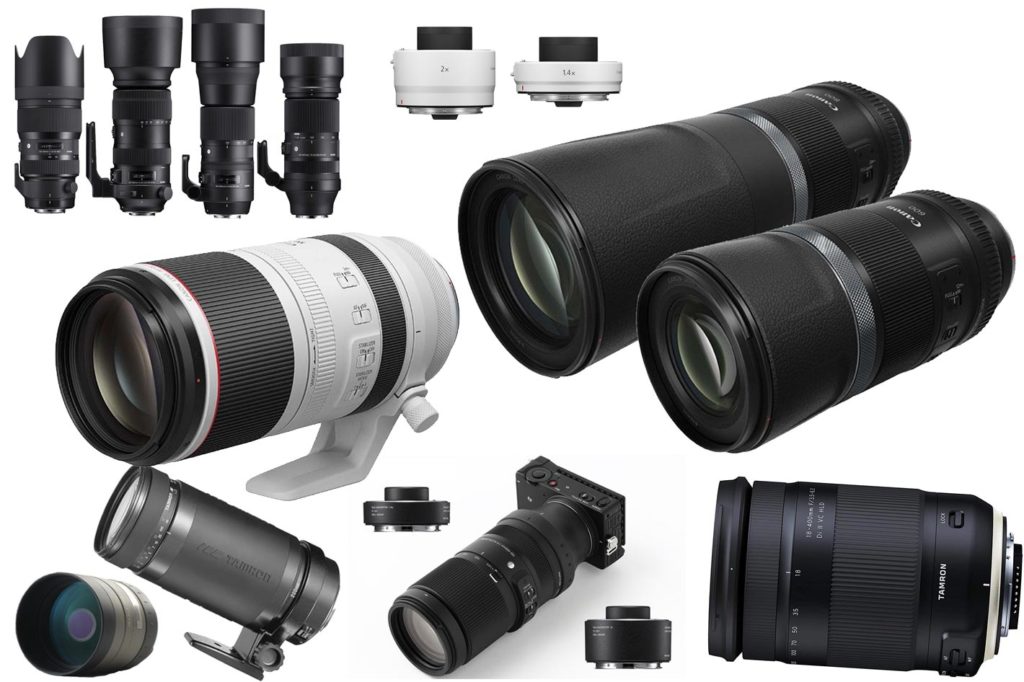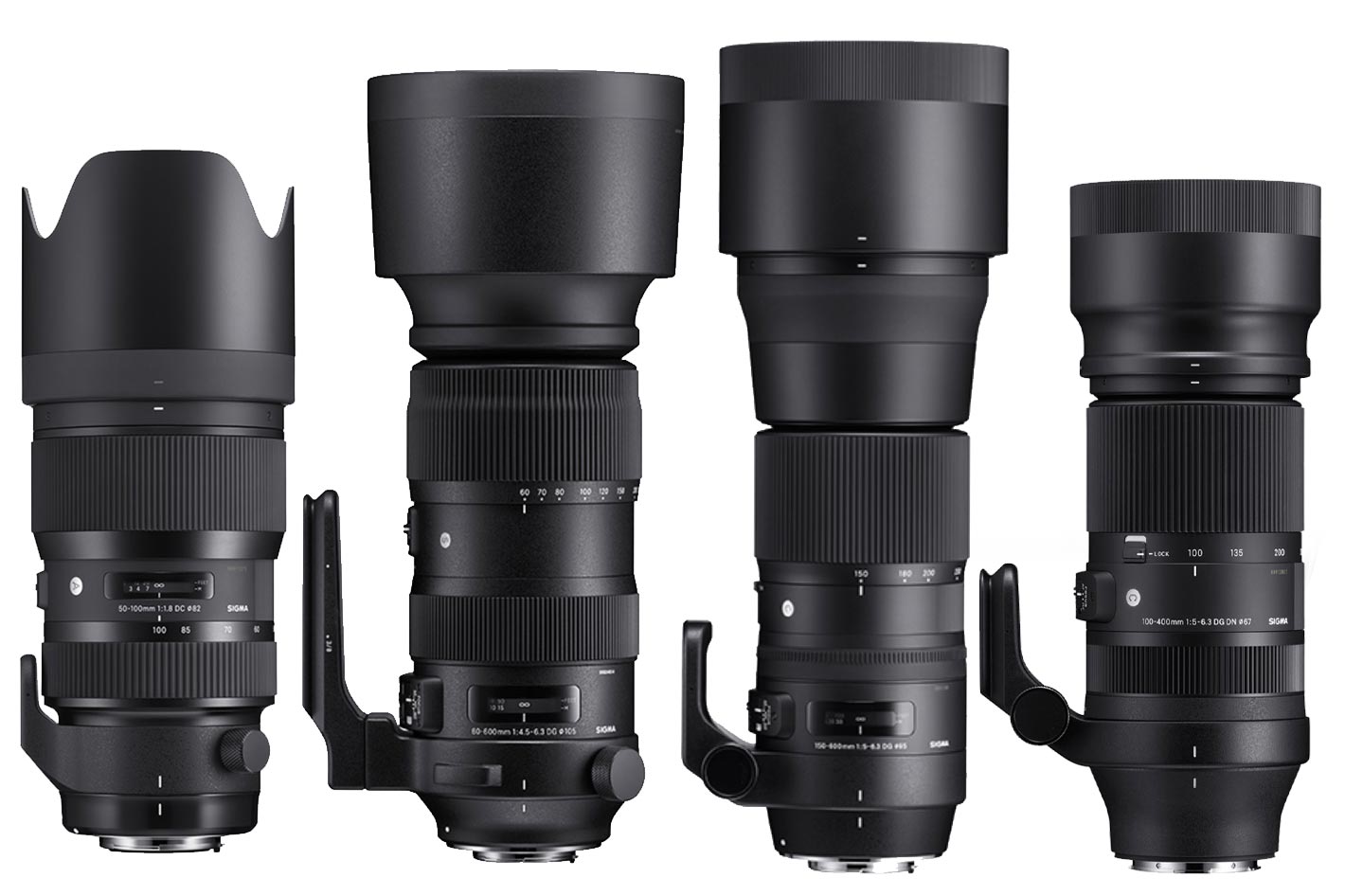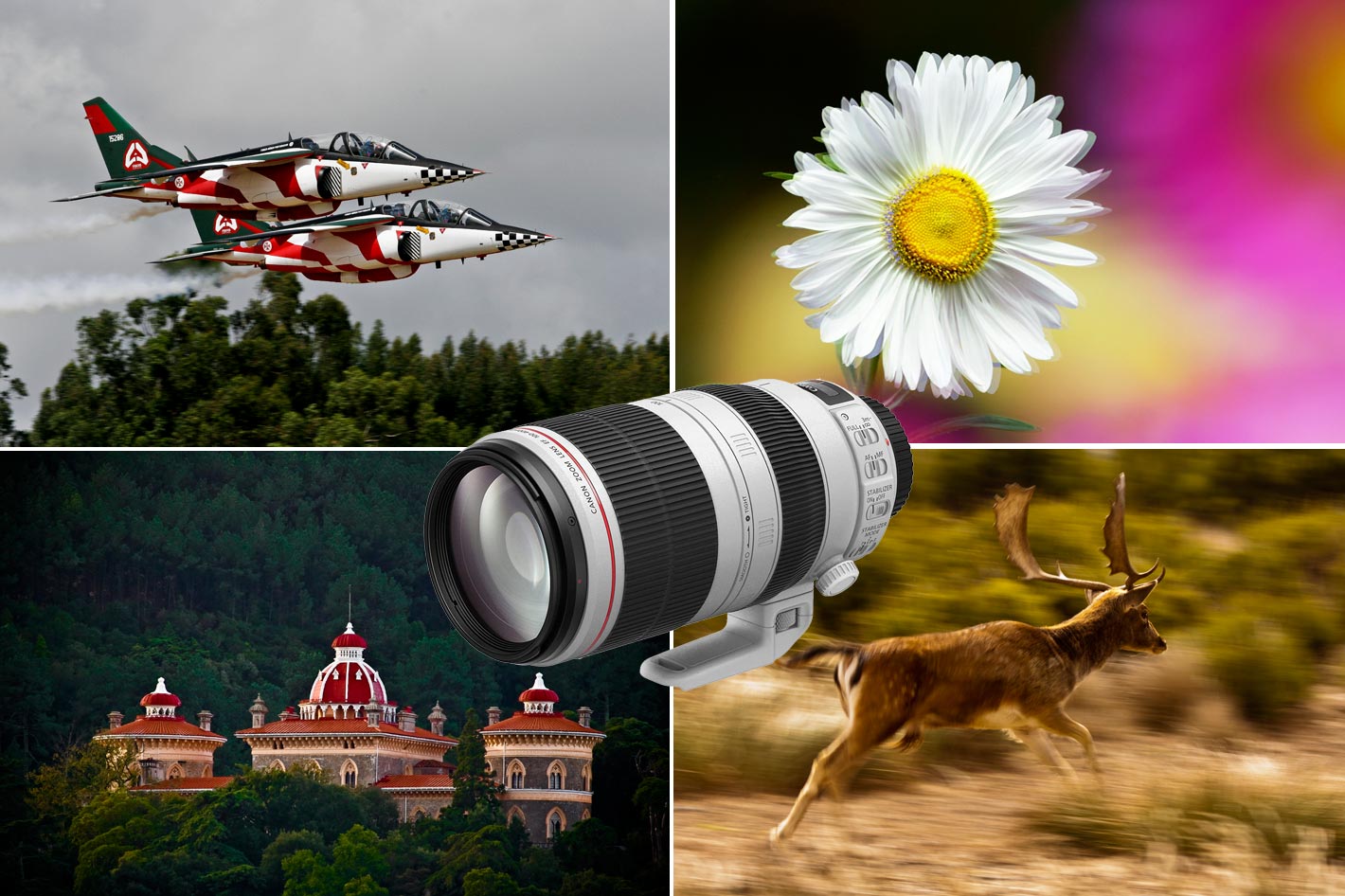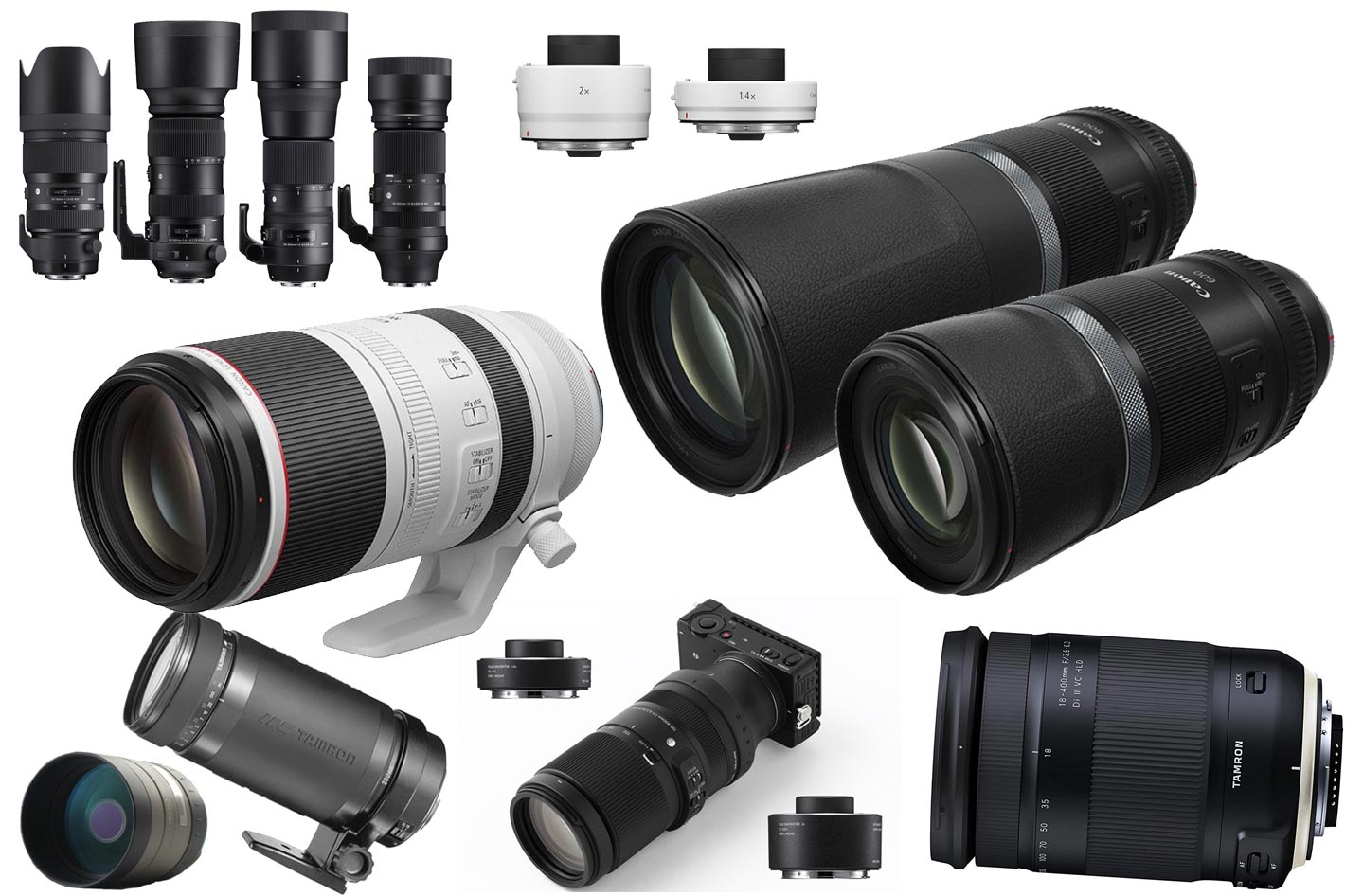 With a new 100-500mm zoom and two telephoto lenses, 600 and 800mm – both at F11 – for the RF- Mount, Canon signals a new era for lenses, but the company is not alone offering long focals.
With a new 100-500mm zoom and two telephoto lenses, 600 and 800mm – both at F11 – for the RF- Mount, Canon signals a new era for lenses, but the company is not alone offering long focals.
Lenses are getting more compact while able to cover more, and a good example of that is the Sigma 100-400mm F5-6.3 DG DN OS presented here at ProVideo Coalition recently. A compact and lightweight solution, with 197.2mm and 1135g, the lens offers, at $949, an affordable solution for users of for L-Mount and Sony E-mount cameras.
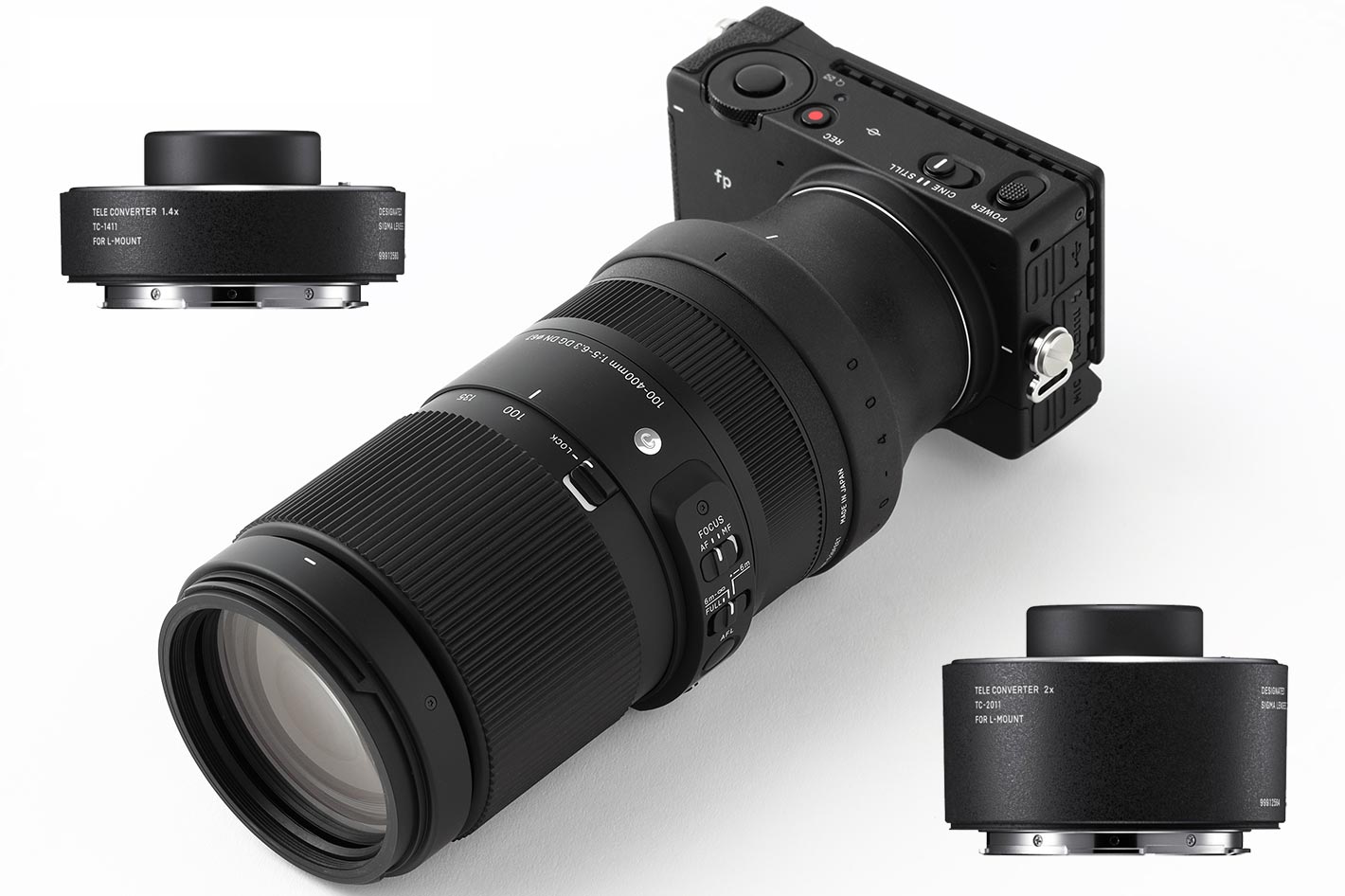 On presenting the lens, Sigma noted that the Sigma 100-400mm F5-6.3 DG DN OS | Contemporary can be paired with the Sigma Tele Converter TC-1411/TC-2011 (for L-Mount only) to give photographers. with the 2x model, a “super telephoto” angle of view with a focal length of up to 800mm (at F12.6) while they enjoy the benefit of the compact system. As I mentioned then, the important aspect to retain is that AF is effective even with the converter attached, something that is not always possible in conventional designs and with DSLRs, except, in some cases, when Live View is used.
On presenting the lens, Sigma noted that the Sigma 100-400mm F5-6.3 DG DN OS | Contemporary can be paired with the Sigma Tele Converter TC-1411/TC-2011 (for L-Mount only) to give photographers. with the 2x model, a “super telephoto” angle of view with a focal length of up to 800mm (at F12.6) while they enjoy the benefit of the compact system. As I mentioned then, the important aspect to retain is that AF is effective even with the converter attached, something that is not always possible in conventional designs and with DSLRs, except, in some cases, when Live View is used.
This is were Canon enters. Previous rumors pointed to a RF 100-400mm f/7.1-11 IS STM, which is very much in tune with Sigma’s offer, but the list of lenses announced by Canon does not show it, and only includes a zoom, the RF 100-500mm F4.5-7.1L IS USM, which is a L-series lens and will come with price accordingly: $2,699. It costs slightly more than the Canon EF 100-400mm f/4.5-5.6L IS II USM, which has been the company’s reference zoom for a long time, for DSLRs, costed at launch.
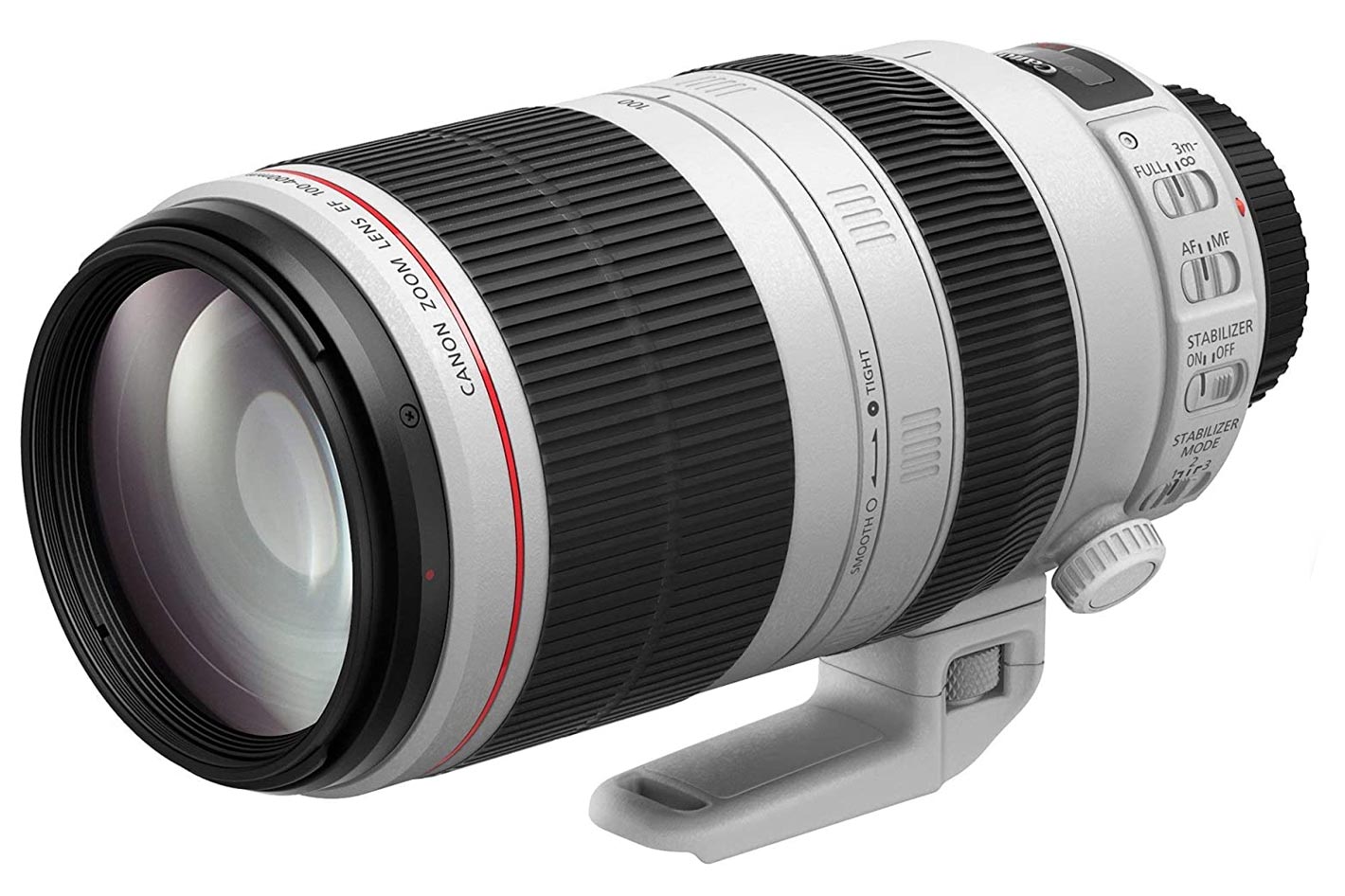 A departure from the classic 100-400mm
A departure from the classic 100-400mm
The RF 100-500mm F4.5-7.1L IS USM is not comparable to Sigma’s offer, but it’s an interesting lens because it represents a departure from the usual 100-400mm used by Canon, and opens the door for a new series of lenses, where slow apertures are the rule. Yes, this new lens has 100mm more than the 100-400, but it also goes from F5.6 to F7.1, a clear indication that Canon believes high ISO and modern technology will allow for a bolder lens design.
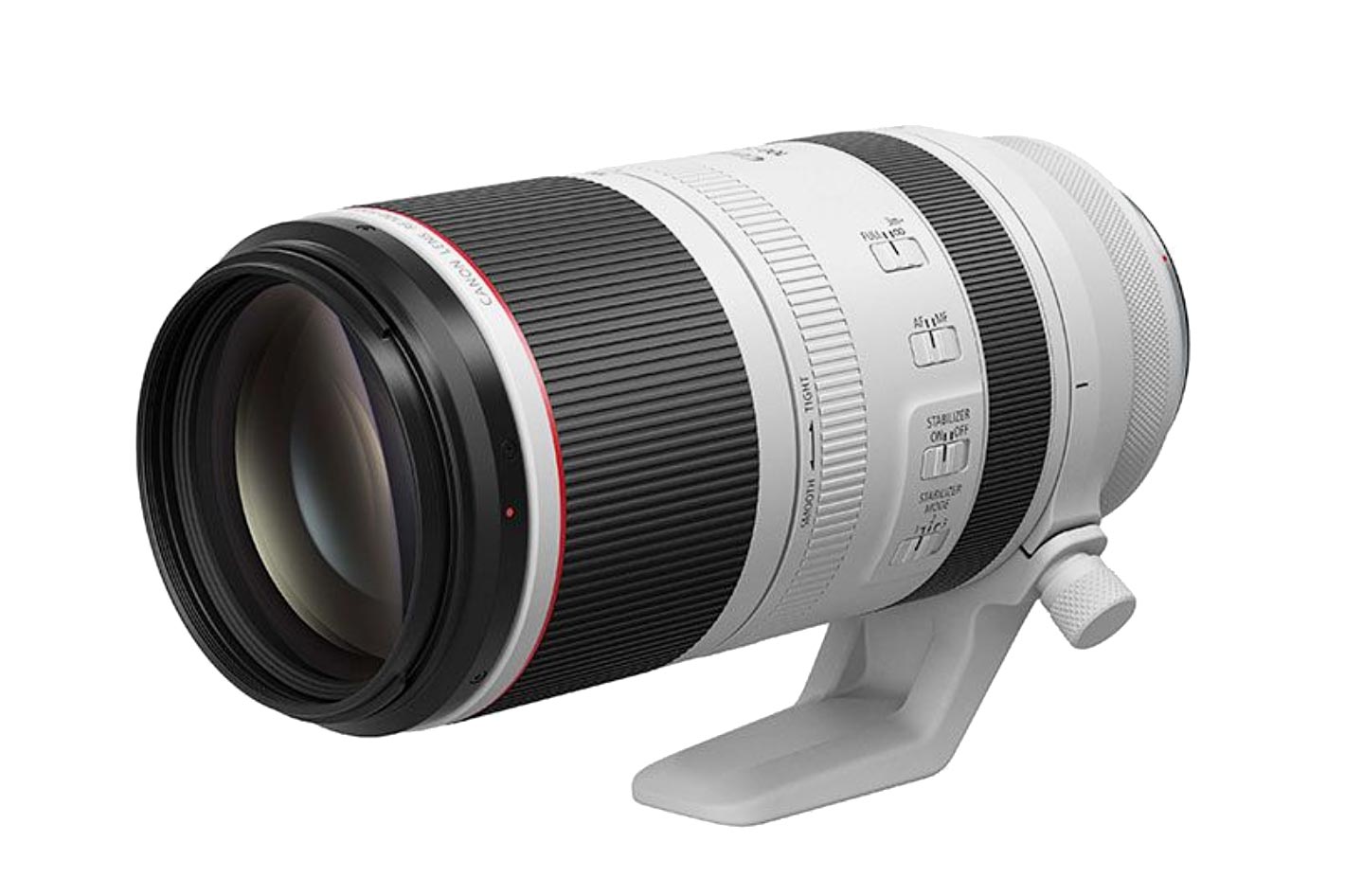 Despite adding 100mm more to the lens, Canon managed to keep the close focusing distance of the RF 100-500mm F4.5-7.1L IS USM at 0.9m, which is similar to what the EF 100-400mm f/4.5-5.6L IS II USM offers. Lens diameter is the same, 77mm (this explains the less luminous aperture) and the lens is 93.8 mm x 207.6 mm with a weight 1370g, slightly longer but less heavier than the 100-400mm.
Despite adding 100mm more to the lens, Canon managed to keep the close focusing distance of the RF 100-500mm F4.5-7.1L IS USM at 0.9m, which is similar to what the EF 100-400mm f/4.5-5.6L IS II USM offers. Lens diameter is the same, 77mm (this explains the less luminous aperture) and the lens is 93.8 mm x 207.6 mm with a weight 1370g, slightly longer but less heavier than the 100-400mm.
The RF 100-500mm F4.5-7.1L IS USM is designed for the same type of users: enthusiasts and professionals capturing sport, wildlife and aviation, who require a reliable, durable and compact lens. As a long time owner and user of Canon’s 100-400mm, which I use to photograph flowers with near macro results, I would love to try the RF 100-500mm F4.5-7.1L IS USM, for its 100mm extra, plus the 6- stop IS it offers when paired with the EOS R5 and R6.
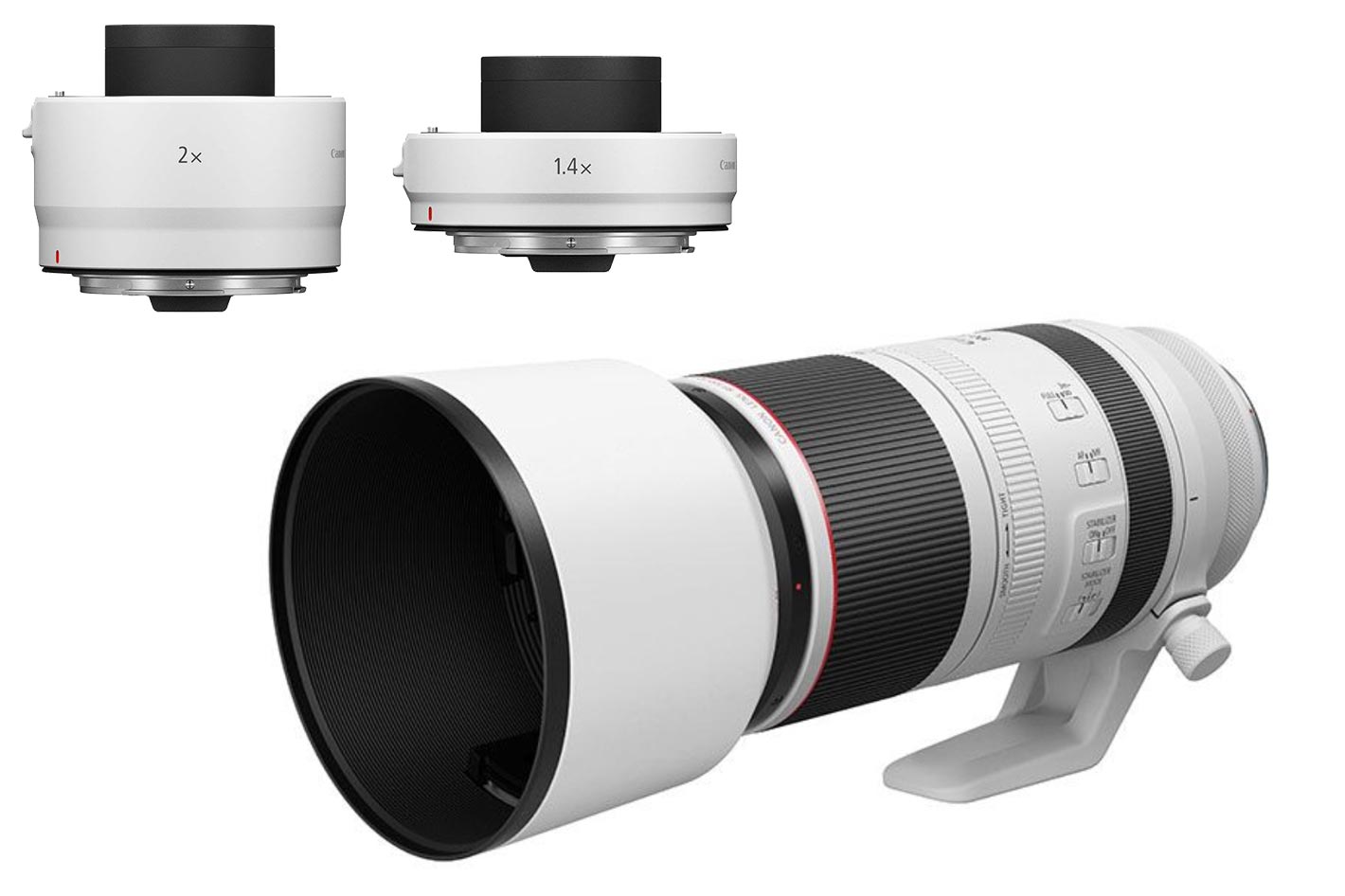 Sigma, Tamron and Canon have unique lenses
Sigma, Tamron and Canon have unique lenses
Remember that the Sigma offers 800mm with a 2x converter? Well Canon also designed two converters that are compatible with the RF 100-500mm F4.5-7.1L IS USM. The EXTENDER RF 1.4x and EXTENDER RF 2x transform the lens into a 140-720mm and a 200-1000mm, respectively. There is a compromise, though: zoom range is limited to 300 to 500mm when the extender is connected to prevent the lens’s rear elements from hitting those of the extender. This means you’ll loose close to 150mm and 100mm respectively, but the bonus is you get extra reach, what’s the idea when using a converter.
Apparently, autofocus will keep working with the converters attached, which is good news, although Canon will have to explain how they did it. Those old enough to have used SLRs will know everything about using duct tape to fool Canon’s long zooms and primes to focus – more or less – with converters, when the aperture was beyond what the system could – officially – manage. Not a good solution for moving subjects, but a trick that bird photographers used to help focusing on static birds.
With the RF 100-500mm F4.5-7.1L IS USM Canon enters the realm of the long zooms, which, one must say, are not a direct result of mirrorless cameras. Anyone familiar with Sigma’s catalog knows the company has built a range of lenses for DSLRs going beyond what’s common: the 50-500mm F4.5-6.3 APO DG OS HSM, a 60-600mm F4.5-6.3 DG OS HSM | S – which the company calls “the absolute all-rounder” -, and in the 150-600mm F5-6.3 DG OS HSM in Sports and Contemporary versions. And don’t forget the Sigma 200-500mm F2.8 APO EX DG, which transforms into a 400-1000mm F5.6 and costs… $25,999.00.
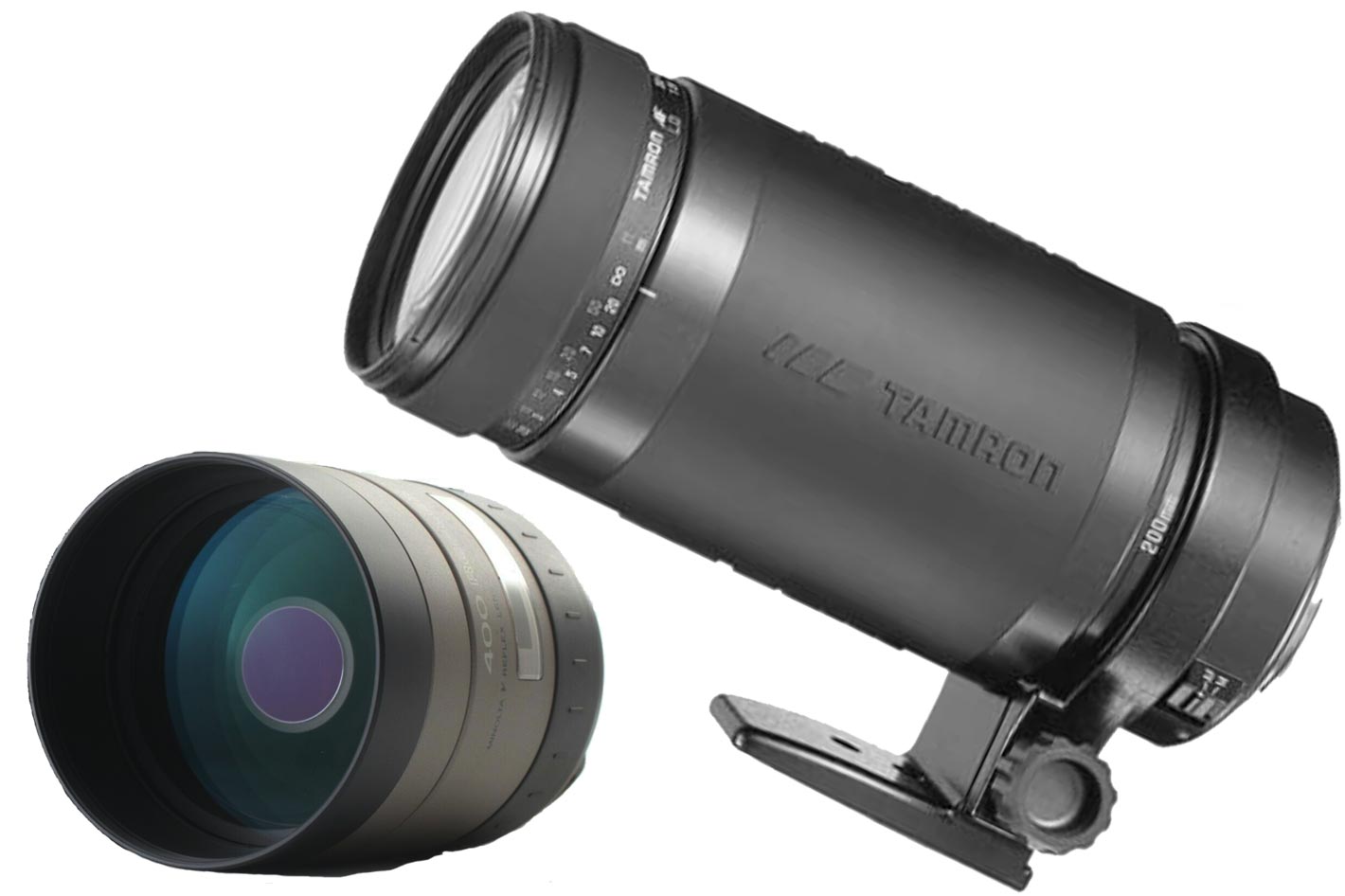 Fixed aperture, a catadioptric heritage
Fixed aperture, a catadioptric heritage
One other lens that can be added to this list is the new Tamron 18-400mm F/3.5-6.3 Di II VC HLD, for APS-C DSLRs from Canon and Nikon, and mirrorless models, with an adapter. The lens, presented as the world’s first 22.2x ultra-telephoto all-in-one zoom, offers, in fact, a 620mm telephoto equivalent to 35mm, due to the crop sensor. The Tamron 18-400mm is also a good “macro” lens, offering a maximum magnification ratio of 1:2.9. Compact, with 123.9mm, and lightweight, at 710 g (Canon version), the lens is another example of what technology allows… and not only for mirrorless cameras.
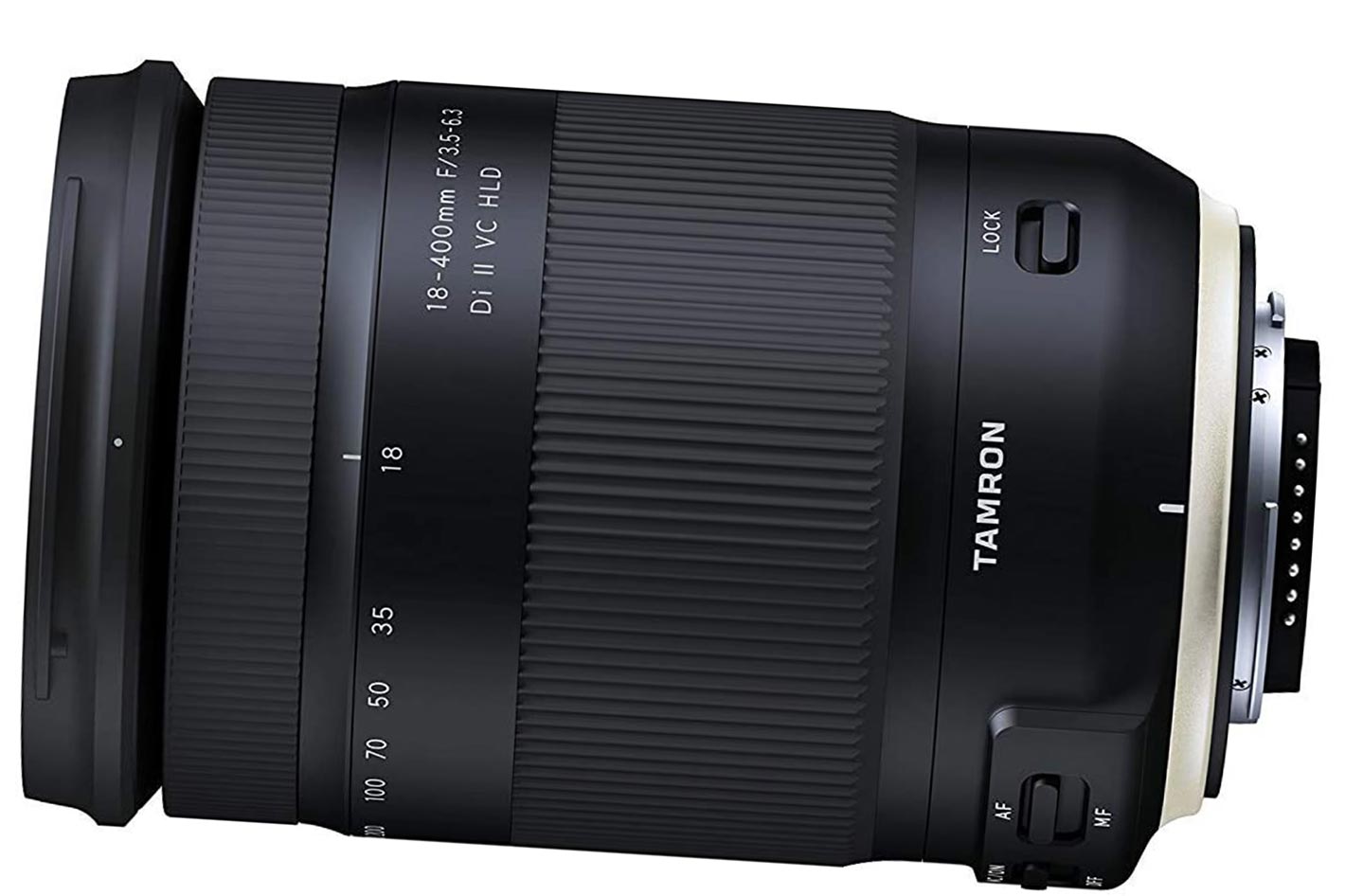 Long telephoto lenses usually offer focal lengths of 500 or 600mm, and are mostly tools for professional photographers, although some enthusiasts buy them. The weight, dimensions and cost make them not very interesting for many uses. I still have a Tamron AF 200-400mm f/5.6 LD IF lens for Canon FD that for a long time was my zoom lens, but when I wanted to travel light – and for some subjects – I would use a Minolta Minolta AF Reflex 500mm f/8, a catadioptric design, and one of the few mirror lens I know that offer AF. I also used another Minolta catadioptric design, the V 400 mm f/8 Reflex, which gave me excellent results with the APS format camera Minolta Vectis S-1, which I still have. Doughnuts were always free with both lenses… if you know what I mean!
Long telephoto lenses usually offer focal lengths of 500 or 600mm, and are mostly tools for professional photographers, although some enthusiasts buy them. The weight, dimensions and cost make them not very interesting for many uses. I still have a Tamron AF 200-400mm f/5.6 LD IF lens for Canon FD that for a long time was my zoom lens, but when I wanted to travel light – and for some subjects – I would use a Minolta Minolta AF Reflex 500mm f/8, a catadioptric design, and one of the few mirror lens I know that offer AF. I also used another Minolta catadioptric design, the V 400 mm f/8 Reflex, which gave me excellent results with the APS format camera Minolta Vectis S-1, which I still have. Doughnuts were always free with both lenses… if you know what I mean!
Catadioptric designs were the way to go if you wanted to travel light and still have a long reach, but things are changing now, as Canon introduces its new lenses: the RF 600mm F11 IS STM and RF 800mm F11 IS STM, which are said to autofocus well at the fixed aperture. What’s more, both lenses accept the new RF extenders, meaning the lenses can reach an incredible 1200mm (RF 600mm F11 IS STM) and an extreme 1600mm (RF 800mm F11 IS STM) optical focal length. And still autofocus, says Canon. The 600mm will cost “only” $699, while the 800mm is priced at $899.
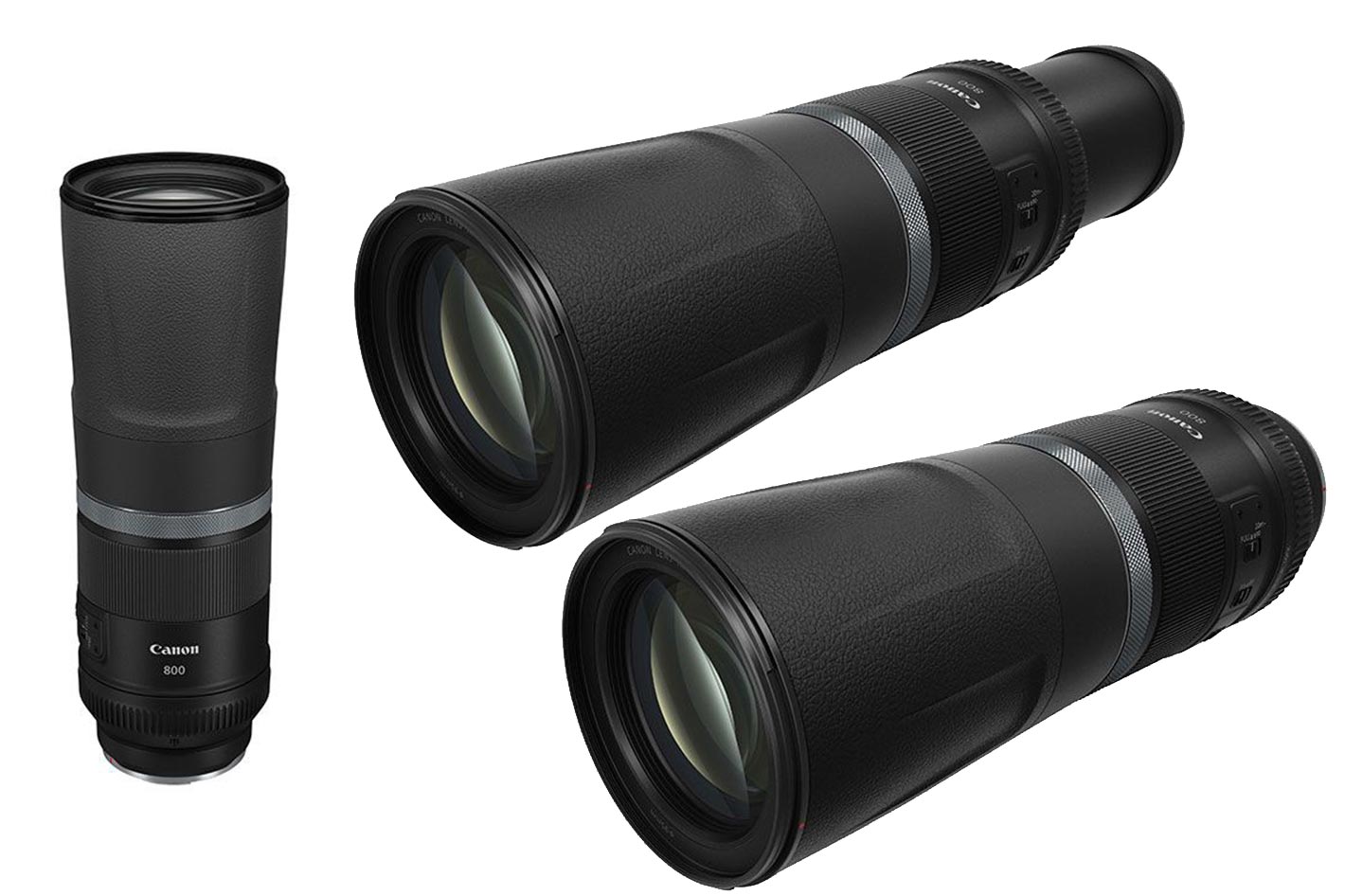 A 1600mm at F22, able to focus at 6 meters
A 1600mm at F22, able to focus at 6 meters
AF systems in the past would not work beyond F5.6, with top cameras, like Canon’s EOS 1, being able to use F8, although some limitations may apply, depending on model. An aperture of F8 continues to be the reference (mirrorless seem to not abide completely by the rule), but it’s apparently going to be shattered as the new designs from Canon suggest… and we’ve seen already with the Sigma 100-400mm F5-6.3 DG DN OS, which uses AF when paired with a 2X converter that turns the aperture into a dark F12.6!
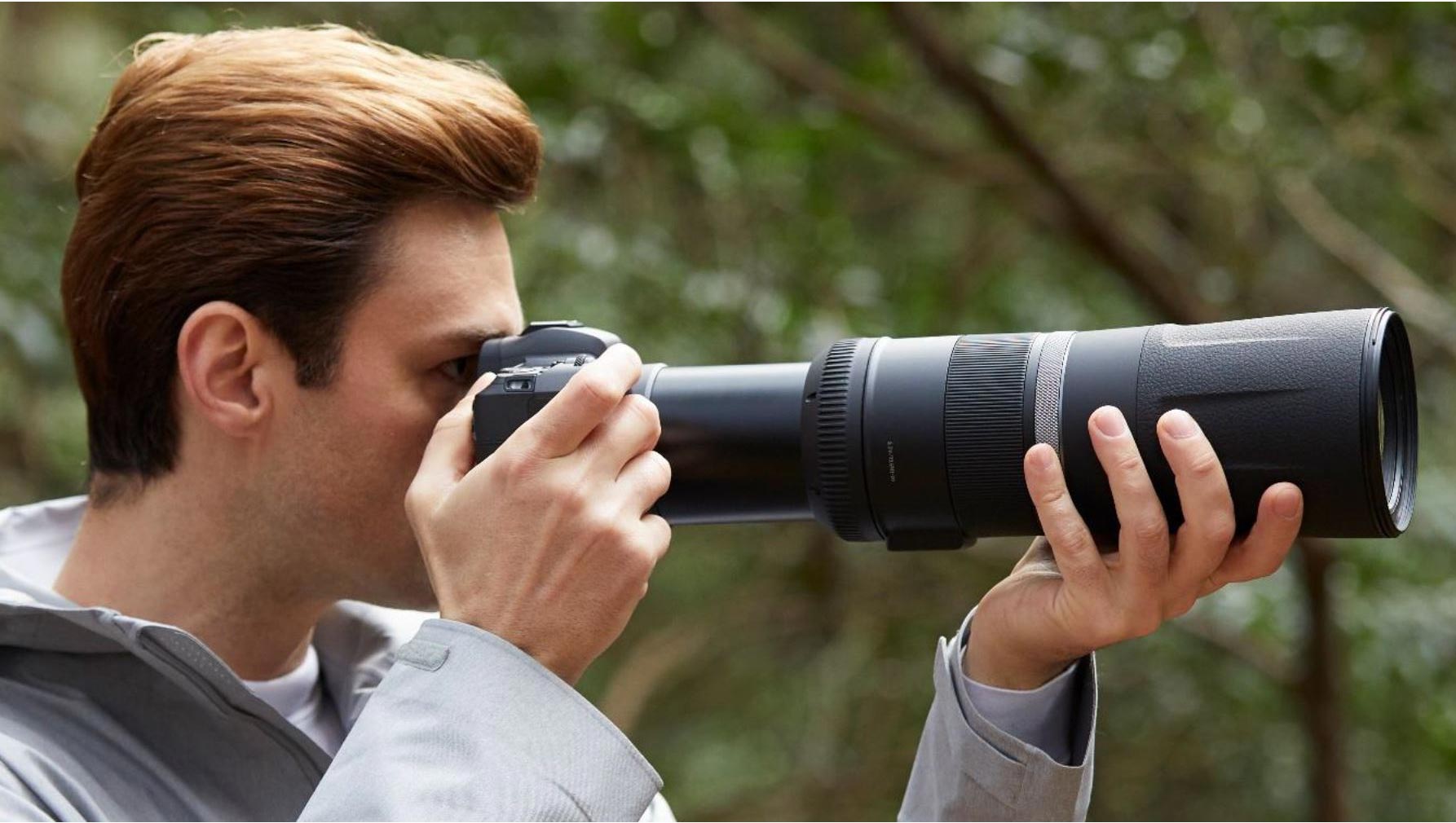 So, welcome to a brand new world, where a 1600mm at F22 (RF 800mm F11 IS STM with 2x converter) is available for Canon R cameras. This monster focal length is only 101.6×281.8mm (extends to 351.8mm when shooting), and weighs 1260g. The RF 600mm F11 IS STM is 93 x 199.5mm retracted and 269.5mm extended, and weighs 930g and transforms into a 1200mm lens. These new concept lenses offering super-telephoto focal lengths are Canon’s show of the potential of the RF Mount, the company says.
So, welcome to a brand new world, where a 1600mm at F22 (RF 800mm F11 IS STM with 2x converter) is available for Canon R cameras. This monster focal length is only 101.6×281.8mm (extends to 351.8mm when shooting), and weighs 1260g. The RF 600mm F11 IS STM is 93 x 199.5mm retracted and 269.5mm extended, and weighs 930g and transforms into a 1200mm lens. These new concept lenses offering super-telephoto focal lengths are Canon’s show of the potential of the RF Mount, the company says.
There is a price to pay, though: minimum focusing distance of 4.5m (RF 600mm F11 IS STM) and 6m (RF 800mm F11 IS STM) clearly shows Canon had to compromise to reach long focal lenghts in an affordable and lightweight package. Still, the fact that these lenses can work with extenders and still retain AF is an important point to consider. From where I see it, there might be a public for these lenses, although no one should expect the versatility of the classic 100-400mm in terms of background separation and close focusing distance at 400mm.
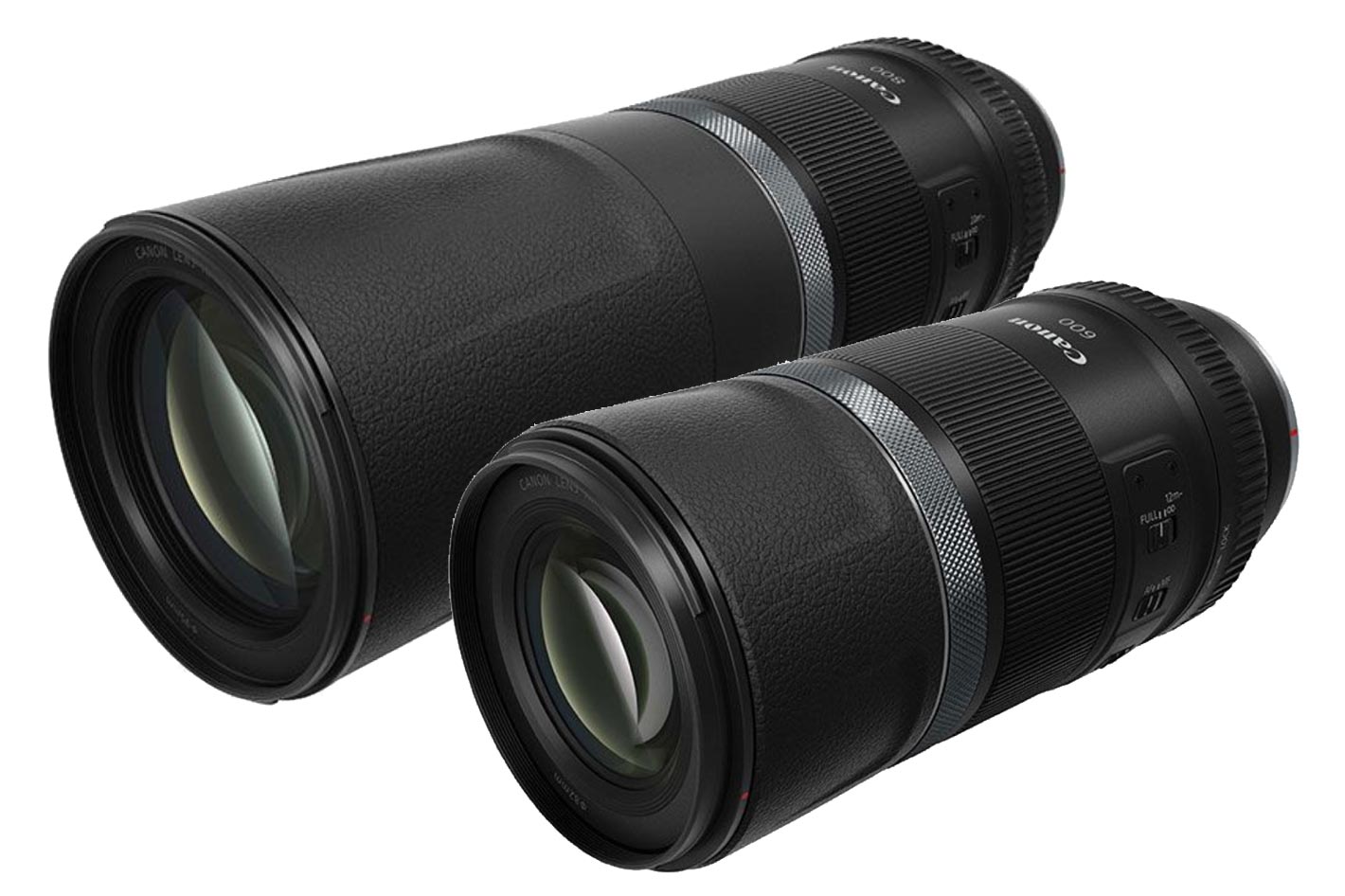 Canon’s old DO technology paired with the RF mount
Canon’s old DO technology paired with the RF mount
According to Canon, “both lenses are equipped with an optical Image Stabilizer and also support Dual Pixel CMOS AF when paired with a Canon EOS R System mirrorless camera. This combination of features allows these super-telephoto lenses to deliver pin-sharp images – even when shooting without a tripod or monopod – as motion blur caused by camera shake is drastically reduced.”
 Construction of the lens mixes the “old” solution uses by Canon’s DO (diffractive optics) lenses combined with the RF Mount and a fixed f/11 aperture, to allow for the new designs. DO lens elements enable telephoto lenses to be lighter and more compact while maintaining a high level of performance, and that’s part of the magic making these new lenses possible. Having been completely re-thought and redesigned, both lenses are significantly smaller and lighter compared to existing EF super telephoto lenses. Equipped with a retractable barrel structure, the lenses are extended in use and easily retracted to be stored neatly – ideal for traveling photographers who have minimal kitbag space.
Construction of the lens mixes the “old” solution uses by Canon’s DO (diffractive optics) lenses combined with the RF Mount and a fixed f/11 aperture, to allow for the new designs. DO lens elements enable telephoto lenses to be lighter and more compact while maintaining a high level of performance, and that’s part of the magic making these new lenses possible. Having been completely re-thought and redesigned, both lenses are significantly smaller and lighter compared to existing EF super telephoto lenses. Equipped with a retractable barrel structure, the lenses are extended in use and easily retracted to be stored neatly – ideal for traveling photographers who have minimal kitbag space.
STM technology offers extremely quiet and perfectly smooth focusing – excellent for video recording, as the lens operation noise is kept at a minimum. If the whole system works as suggested, these can be added to any videographers toolkit for capturing wildlife images… in good light conditions. Everything else seems to be present: the Lens Control Ring on both the RF 600mm F11 IS STM and RF 800mm F11 IS STM gives direct and speedy control over Tv/exposure compensation/ISO/AF operation settings.
High ISO will be a must at F11
The lens’ fixed aperture also provides, says Canon, a perfectly circular bokeh and their large focal length enables photographers to blur the background sufficiently when photographing subjects in the distance – an excellent charcteristic for animal portraits as subjects stand out more. Only a field test will show the results that can be achieved, but these two lenses, also because of their fixed aperture, sound very much like offering a modern day solution to what Minolta’s catadioptric lenses offered in the past: a lightweight solution with AF capability.
Canon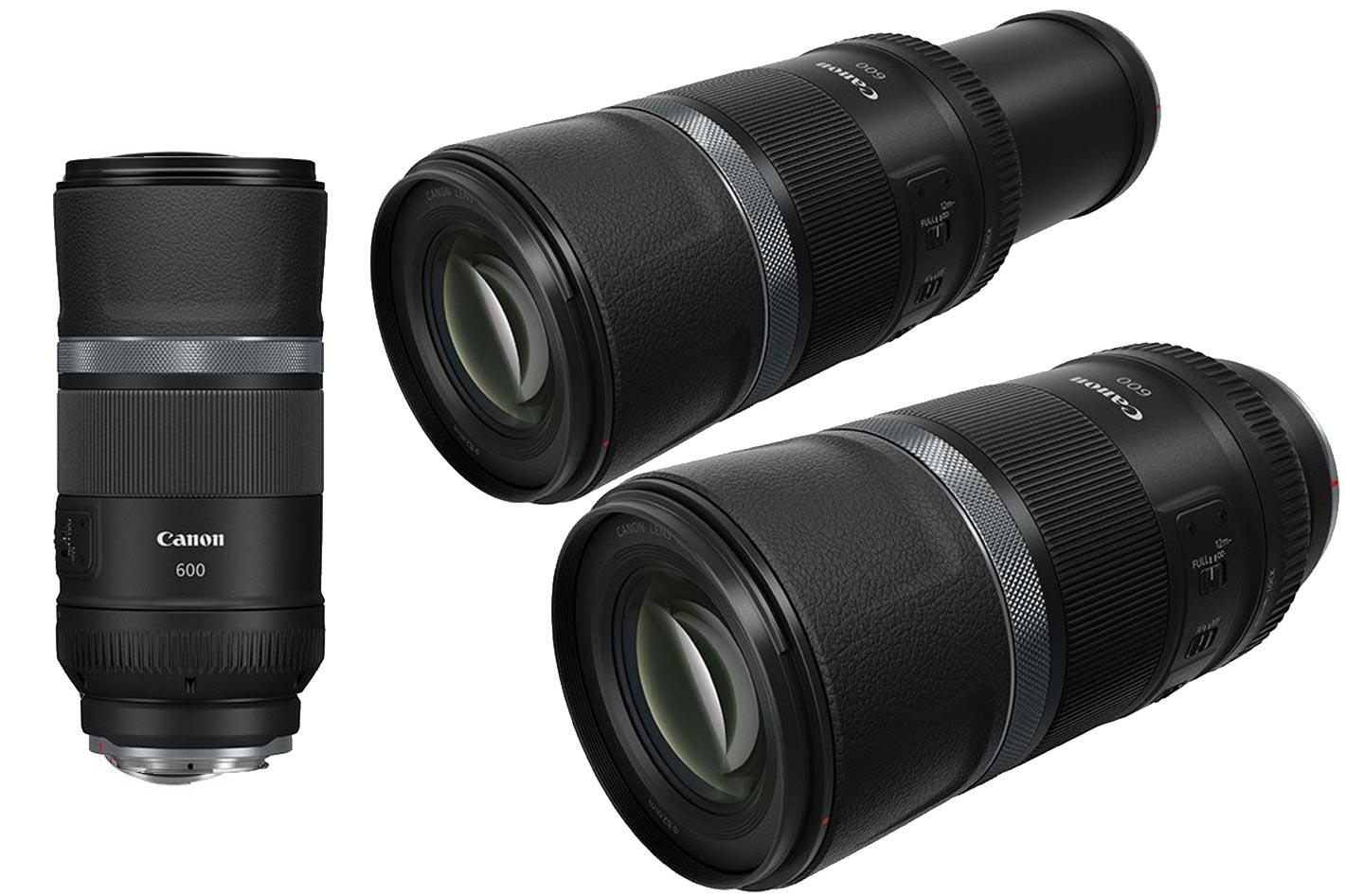 suggests these lenses are ideal for anything from wildlife to aviation and even moon photography. ISO values will have to go much higher than what you’re used for, when shooting moving subjects, but they are still within the realm of what’s possible (or acceptable for some), if one considers how easily digital photographers have it compared to those who had to live with emulsions: with the Minolta 500mm F8 lens all I could use was a Fujifilm Velvia 50 ISO transparency or a 100 ISO Kodak Ektachrome Panther or similar transparency.
suggests these lenses are ideal for anything from wildlife to aviation and even moon photography. ISO values will have to go much higher than what you’re used for, when shooting moving subjects, but they are still within the realm of what’s possible (or acceptable for some), if one considers how easily digital photographers have it compared to those who had to live with emulsions: with the Minolta 500mm F8 lens all I could use was a Fujifilm Velvia 50 ISO transparency or a 100 ISO Kodak Ektachrome Panther or similar transparency.
I am not sure fast moving aircraft will be the best subject to capture with these 600 and 800mm F11 telephotos, and from my experience shooting aerobatics and festivals I would not leave at home my trusty Canon EF 100-400mm f/4.5-5.6L IS II USM, which has been my go to lens for, let me say this again, wildlife, aviation, landscape and… flowers. The new RF 100-500mm F4.5-7.1L IS USM… yes, I believe it will work, but only with very good light conditions the F11 in these two fixed focals will be enough, if you want to keep your files as much free of noise as possible. Being old school, I love to keep to 100 ISO as much as possible, so these are hardly my first choice as traveling lenses or for much of the photography I do. But I am willing to be proven wrong if Canon lets me test the new 600 and 800mm with a mirrorless EOS R5 or EOS R6 body…

Filmtools
Filmmakers go-to destination for pre-production, production & post production equipment!
Shop Now